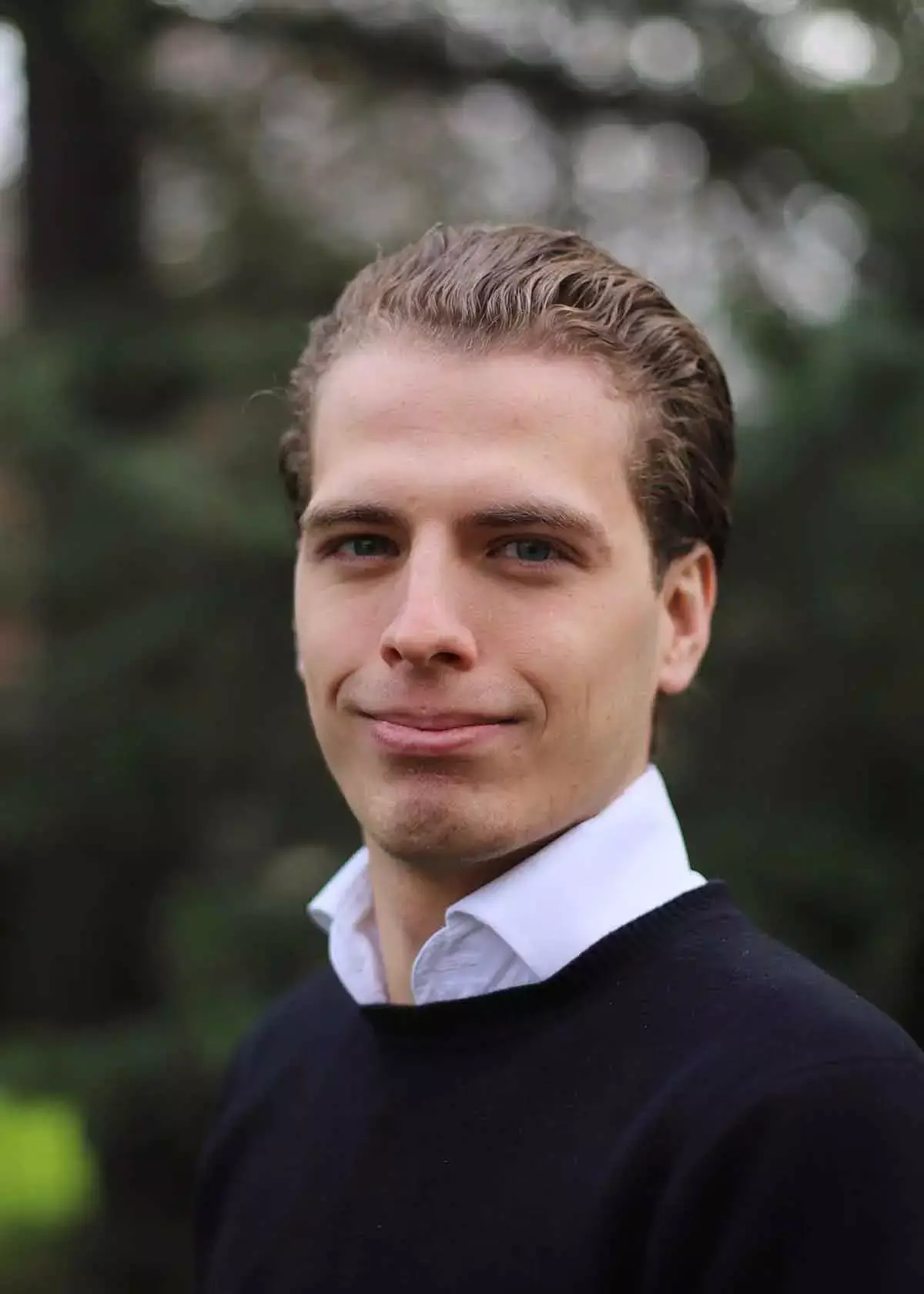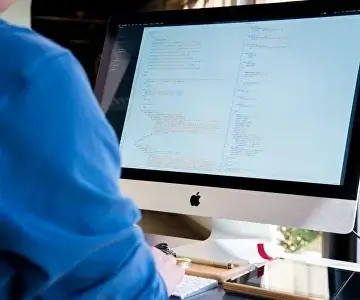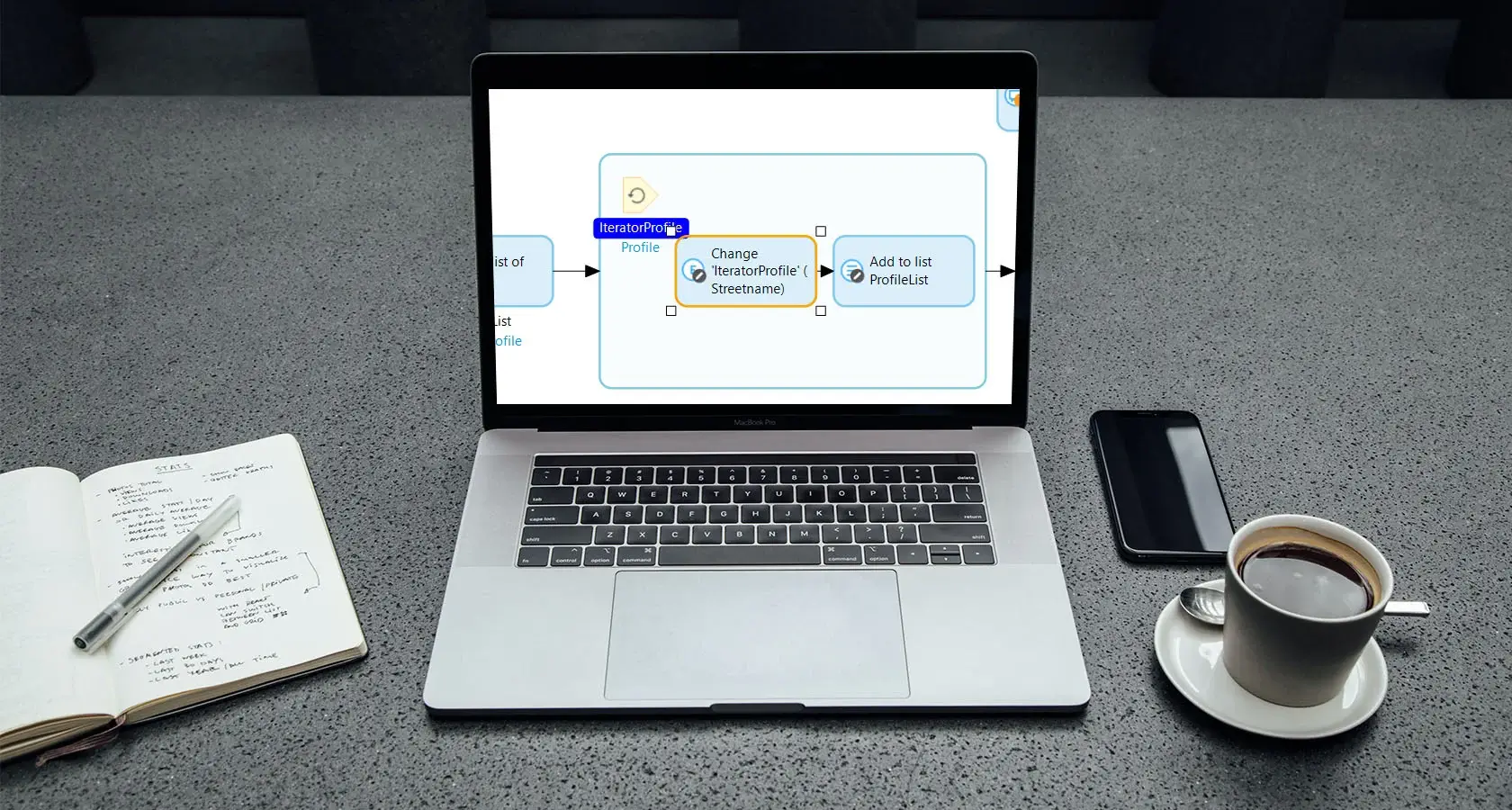Data Analytics Engineer @
Finaps
Tim Pijl is a Senior Data Analytics Engineer at Finaps. He has been working for Finaps for over three years. In this blog he will share his journey on what he has encountered so far and what he has been going through as a Data Analytics Engineer at Finaps.
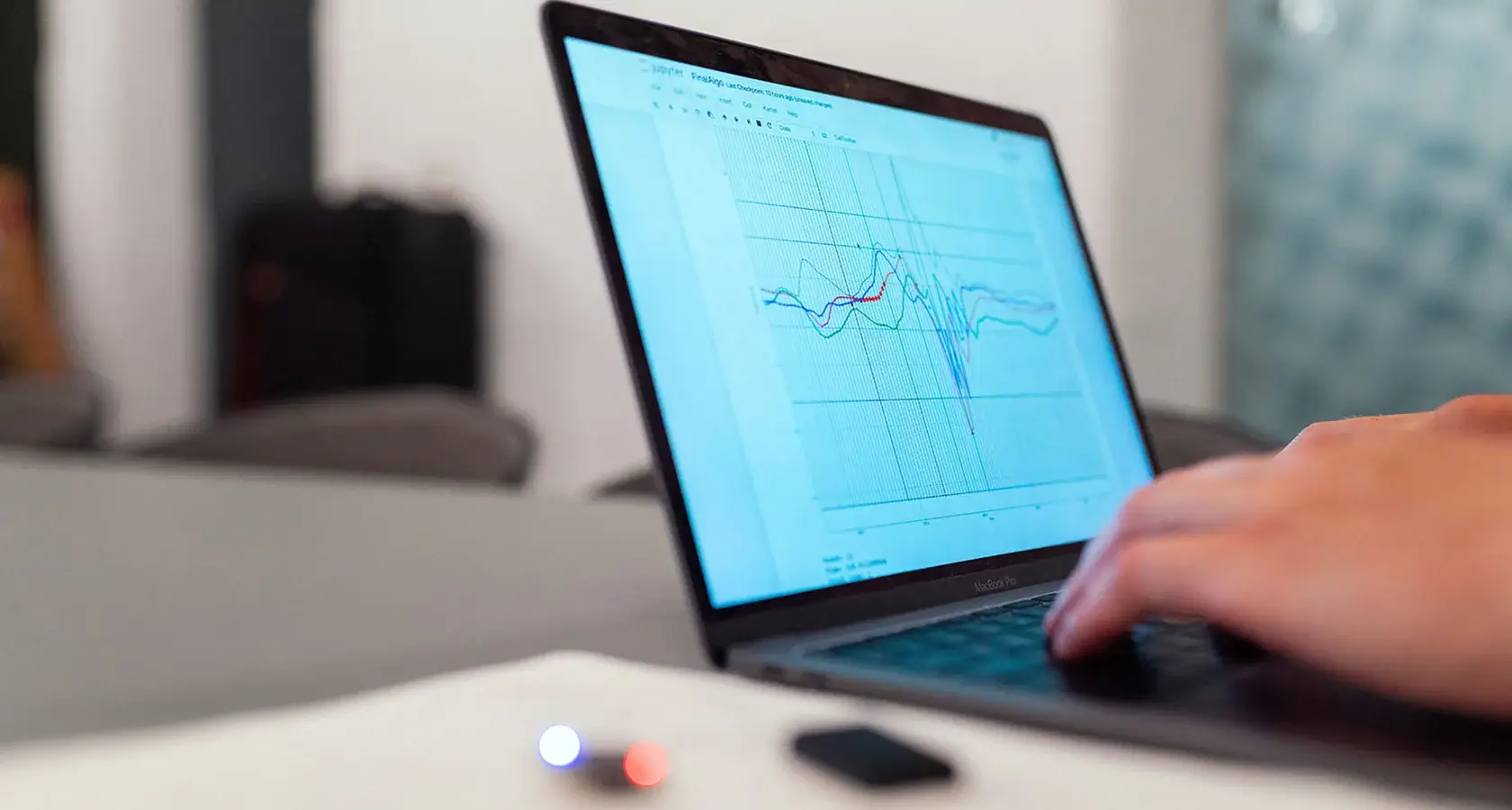
07-2020
It is already been three years since I’ve started at Finaps and to be honest, the time has flown by. After finishing my masters in Econometrics & Management Science at the Erasmus University Rotterdam, I could not have foreseen that I would be working as a Software/Data Analytics Engineer at a software company. Even after three years, it’s as fun as when I started –maybe even more so, as I learn more and more– and in this article, I will talk about my time as a Data Analytics Engineer at Finaps.
Data Analytics or Software Engineer?
Personally, I am of the opinion that job titles don’t matter -after all, it is the work you do that matters-, but it can be useful for people to quickly grasp what you are doing. Currently, my formal job title is Senior Data Analytics Engineer, it is the best we could come up with given the work that I (and my colleagues) do. Data Analyst (or Data Scientist) would not be sufficient, as analysing data is only one part of our work.
We are also building applications such that non-technical users can interpret, interact with, and understand the data. Then again, being a Software Engineer only would not describe our passion for data-driven solutions, as every solution we built has a strong data component in it. Thus, we combined the best of both worlds, making us Data Analytics Engineers.
My Journey
Given my background, I had almost no experience developing software. I could make scripts in Matlab, had one course of Java during my studies, and Googled Python once –maybe twice– as I overheard someone talking about it. It seemed I had a lot to learn. My initial weeks consisted of training, training, and even more training. I learned how to write code in Python and SAS, being able to quickly analyse data and built an algorithm in both languages. Step by step I was becoming a developer.
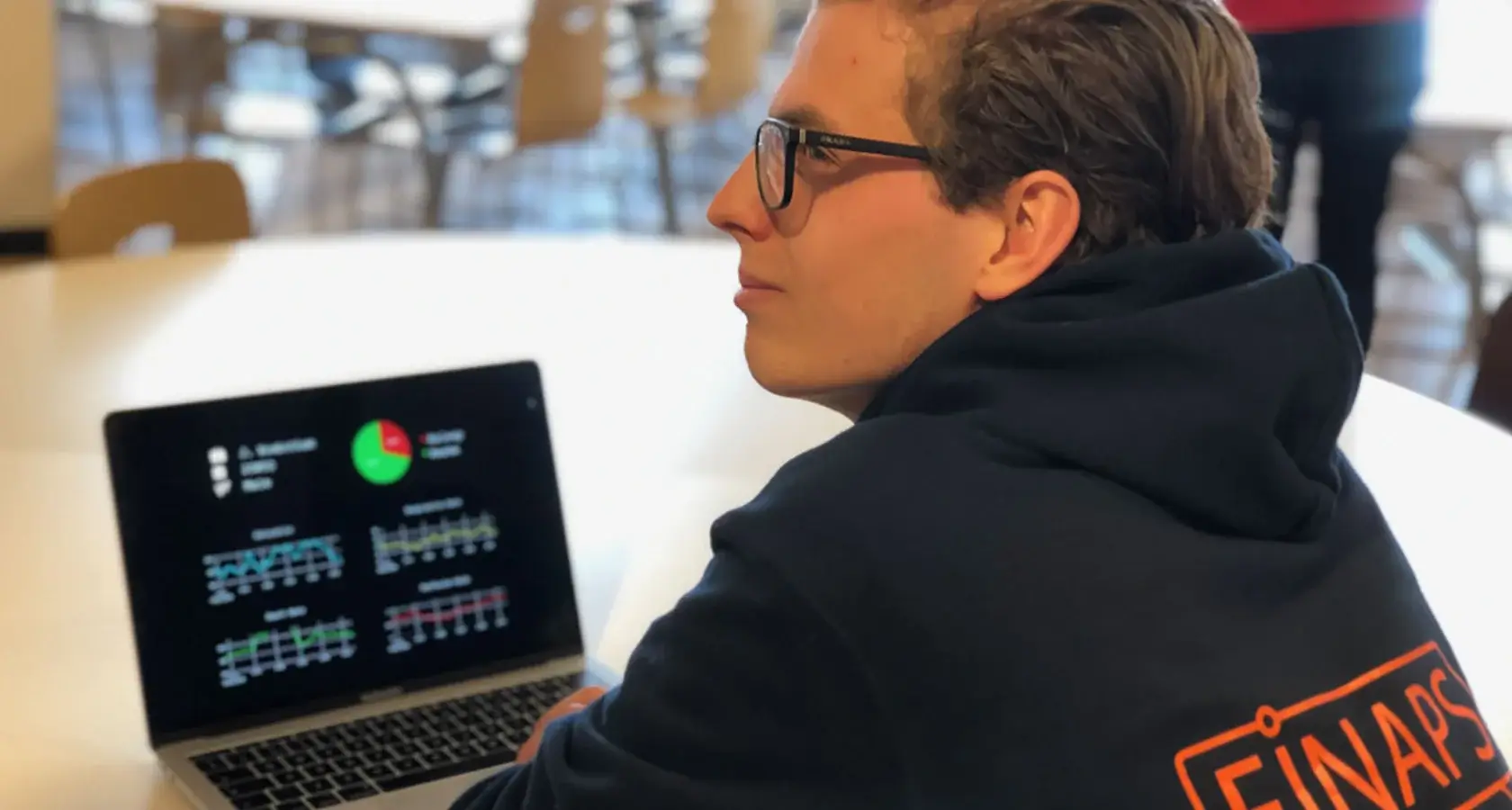
Very quickly, after roughly two weeks of training, I started working for UMC Utrecht at the Applied Data Analytics for Medicine (ADAM) programme in the Big Data for Small Babies project. Together with two colleagues, we were building an algorithm that can predict which babies in the Neonatal Intensive Care Unit have a high probability of sepsis. I don’t think I could’ve had a better project to start with. Not only did I learn a lot about medicine, medical processes, and the behaviour of sick babies, I was actively becoming a better developer day by day. As “Just do it” is –in my opinion– one of the best ways to learn how to build software.
As my technical skills improved, my “soft skills” improved just as much. The work that we do is more than developing software. As one of the ADAM programme managers said nicely: “Those guys from Finaps are really good in translating real-world problems into technical solutions!”. To be able to do this, you have to ask the right questions and communicate your work in such a way that every stakeholder understands and appreciates it. Nothing I had ever done before, but very important lessons to learn nonetheless.
After half a year, I went on to my second project, the ING Smart Working Capital Assistant (SWCA). For the first time, I was part of a team-building a mobile application where I was responsible for the data analytics happening in the background –predicting certain metrics on debtor behaviour. I quickly learned how a “frontend” (the user interface) and “backend” (the application logic) are built and connected. I learned how to set up databases and how to expose your algorithm such that it can be used and the results of it displayed in the mobile application. Again, one step closer to being an all-round data analytics engineer.
From this project onwards, I never really stopped learning. The open-source community never stands still. Continuously, new Python and JavaScript packages are being released and you have to keep up to date with the latest technologies. But not only my technical skills but also my soft skills, keep improving as in our work soft skills are just as important. This is what I love about my work. You’re not a code monkey, sitting behind your laptop all week. You participate in client conversations, give demos, and learn something new almost every day. This variety of work is what excites me.
We combined the best out of both worlds, making us Data Analytics Engineers.
My Week
Let me start by saying that no week is the same. Furthermore, in our team of 6 engineers, we all have slightly different responsibilities, depending on what their preference is. I will try to paint an accurate picture of what my regular week looks like but don’t quote me on it.
Usually, our team works four days a week on one or two client projects. We start every day with a daily standup, where we discuss what we’ll be doing today and if there are any impediments or issues that require extra attention. After our daily standup, we’ll start developing on certain functionalities, depending on the project. This can be analysing new data, building an API, or polishing the frontend. During the week, we’ll have multiple meetings with the client, these include –but are not limited to– refinement sessions, where we dive deep into a particular functionality to know exactly what needs to be built, demos of functionalities built or retrospectives, where we evaluate the progress of the last couple of weeks.
Usually, engineers will be actively developing 75% of their time at the client. The other 25% will be meetings as described above. Exact percentages are a bit dependent on your preference and your role in the project. This variety is exciting, as you are not only coding but actively trying to translate the business problem into a technical solution.
Fridays are usually reserved for Internal Operations. Depending on your role within the organisation, this can exist in multiple activities to help the organisation forward. A couple of things I do on Fridays are interviews, helping with education & recruitment, mentoring new employees. Furthermore, every Friday afternoon we have our weekly team meeting, where we discuss project progress and last and the upcoming week in detail.
Final Notes
It is hard to put what I do at work into words, but I have tried to paint an accurate picture of what I do for a living. I want to wrap up with saying that it does not matter if you have no software development experience, you just have to be eager to learn and have some affinity with IT. I think that for all our engineers, intrinsic motivation to learn new things and explore the unknown is key. You will learn by doing, as almost all of us started at Finaps without a Computer Science degree.
